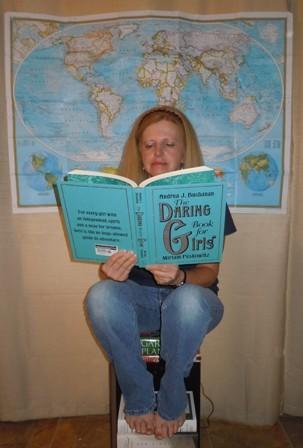Cheryl Hughes: It’s In the Details
I worked a few days for our office manager, Jackie, at New Image Car Care this week. I had forgotten how much I miss seeing people every day. I had really forgotten how much I miss hearing the guy-talk that goes on around the shop, especially the hunting talk. There’s nothing like a good turkey-hunting story. They are so replete with detail. Guys who can’t tell you how to get down to the local IGA can tell you every step a big gobbler made in the clover field that morning, as well as a description of the surrounding terrain, wind direction and barometric pressure.
The attention to detail rivals Paula Dean’s recipe for pumpkin roll with cream filling and caramel sauce. The description will go something like: “He had inch-and-a-quarter spurs, and one of them was hooked. The other one was normal, but I tell you, that bird had a beard that was at least this long!” It is at this point in the epic that the story-teller uses both hands, one extended above the other, with a seven-inch gap in between. I’ve noticed this is the measuring method of choice used by most turkey hunters. (“Why don’t they just tell you how long the beard was?” one might ask. Let me explain.) If there isn’t sufficient reaction from the audience of men listening to the story, the story-teller’s hands begin to lengthen the gap, be it ever so slightly, until he believes the turkey’s beard has gained the respect it deserves.
There are also sound effects to go along with the stories. It’s too bad this isn’t an audio piece. Of course, there are mouth calls and box calls and scratch calls, and a lot of these guys are really good at calling turkeys in, but the sound effects that are most amusing are the ones of other things going on around hunters in the woods. They’ll hoot like owls or caw like crows or make a booming sound like an expanding 55-gallon oil drum. These are the sounds they refer to as shock calls. A shock call will make a turkey gobble. It would be like somebody jumping out from behind the door and scaring you or me. We would scream or at least yell in surprise.
There are all kinds of hunting gear, regalia, and decoys, as well as in-depth discussions on which ones are best. I would have thought you’d make the decoys look like hens, after all it is mating season. That shows you how much I know. The most effective ones are the ones that will offer a challenge to a big gobbler’s territory. It’s a male rivalry thing—the ole “if you’re going to catch a turkey, you’ve got to think like a turkey.”
One of the truly remarkable skills of the seasoned turkey hunter is his ability to immediately know the age of every turkey in the field. You will hear conversations that include observations like, “Two of them left the field, but that big boy he just stayed right where he was, just sat there for over an hour. I figured out it was two two-year-old birds and a three-year-old bird.” (This, from men who don’t know the ages of their own grandchildren.)
After listening to a few days of these stories, I’ve realized that there are two universal laws that govern all turkey hunting: 1. No matter how long you’ve been set up in one spot, without moving or seeing or hearing anything, as soon as you put down your gun, there will be a turkey right behind you, and 2. It makes no difference which side of the field you set up on, the turkeys will always come out on the other side.
Have you ever seen the movie, “Man’s Favorite Sport?” It’s an old movie about a man who runs a sporting goods store, and because he has listened for years to the stories of the old fisherman who hang out there, he learns all sorts of stuff about fishing. He decides to write a book, and it becomes a best seller.
I think it’s doable.
- Log in to post comments



























